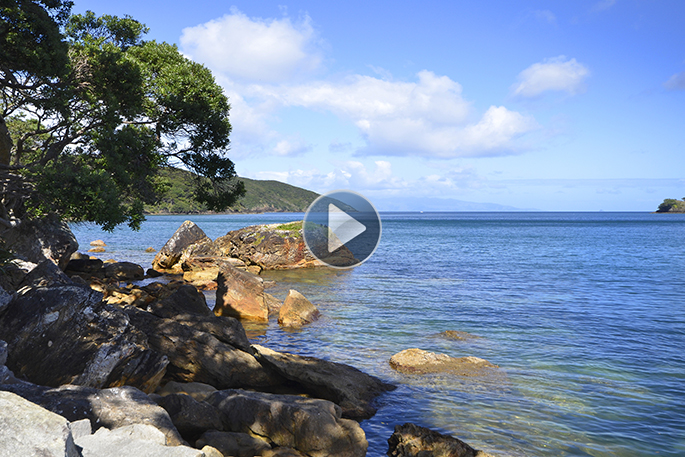A new marine spatial plan with a comprehensive range of suggested measures designed to boost the health of the Hauraki Gulf/Tikapa Moana has been unveiled.
New Zealand's first marine spatial plan Sea Change – Tai Timu Tai Pari was symbolically handed over to central and local government agencies during a ceremony in Auckland on Tuesday night.
Four years in the making, the non-statutory plan for the gulf is the outcome of a huge collaborative project overseen by a partnership between mana whenua, and local and central government.
Drafting of the plan was undertaken by a multi-sector Stakeholder Working Group following community engagement and was approved by the mana whenua-agency governance group in November.
The Sea Change – Tai Timu Tai Pari marine spatial plan is designed to improve the mauri (life force and vitality) of the gulf and better protect it for current and future generations.
'The Hauraki Gulf/Tīkapa Moana is a taonga for all the communities of this special area. It is significant for its cultural, environmental, economic and social values,” says governance group co-chair Paul Majurey.
'We all need to work together if the gulf and its resources are to be better protected. This plan provides us with a blueprint for action to make the gulf increasingly productive, and to support healthy and prosperous communities within its boundaries.”
For years the Hauraki Gulf's health has been damaged and/or threatened, with a range of problems identified such as depleted fish and kaimoana stocks, fine sediments washed off the land smothering marine life by, increased pressures from population growth and development, and declining biodiversity.
The Sea Change Tai Timu Tai Pari marine spatial plan suggests tackling the gulf's issues head on.
The plan calls for the eventual banning of certain commercial fishing methods, reviewing the way fish stocks are managed, plus the creation of 13 new marine protected areas and extension of two existing ones to better protect the marine environment plus support fish and kaimoana stocks.
It also calls for the creation of new local 'Ahu Moana” marine areas, to provide for joint mana whenua and community management of local marine areas to support sustainable use of the gulf.
The plan also recommends setting limits for sediment and nutrients getting into the marine environment from land-based activities, as well as suggesting areas for an expansion of environmentally sustainable marine farming.
'The plan's development has been a major piece of work and I would like to thank SWG members who have worked tirelessly on this project, along with the various agencies, advisors and community members who have had input into the plan.
'The challenge now is for agencies to pick up the recommendations suggested and to optimise the tools they have at their disposal to chart a new way forward for the health of the gulf.”
Agencies involved in the creation of the non-statutory plan include the Waikato Regional Council, Auckland Council, local councils the Department of Conservation and the Ministry for Primary Industries. The SWG's deliberations were informed by extensive scientific advice.
A Thames event to will take place at the Thames Racecourse, 511 Parawai Road, Thames, Coromandel, on Wednesday, December 7, at 6pm.
To read the full text of the Sea Change – Tai Timu Tai Pari marine spatial plan visit: www.seachange.org.nz

Photo: seachange.org.nz



0 comments
Leave a Comment
You must be logged in to make a comment.